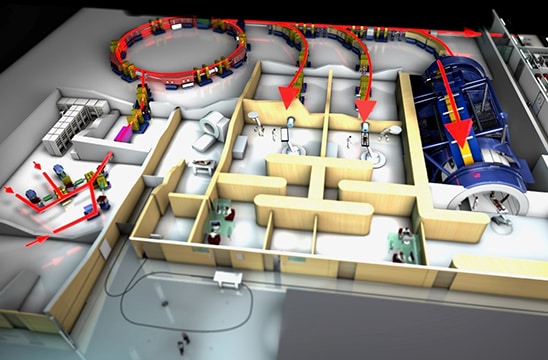
Proton Therapy Facility Layout (Courtesy of Heidelberg Ion Beam Therapy Center HIT )
For years, chemotherapy and radiation therapy have been the most common treatments for cancer.But there is a special cancer treatment class where using proton's energy instead of photon's (i.e.X-rays) is showing promise of being able to treat cancer more accurately and with fewer side effects.Vacuum is an important enabling technology of this impressive class of systems.
Anatomy of the proton beam-based system
A proton beam-based radiotherapy system is a very complicated device.The full system can easily be 50 to100 meters long and it is one of the practical examples of a particle accelerator.It is based on three main parts—the proton source, the proton beam line, and the end station, sometimes named "the gantry." In the case seen below, the device is designed to accelerate protons and sometimes heavier ions like carbon ions.
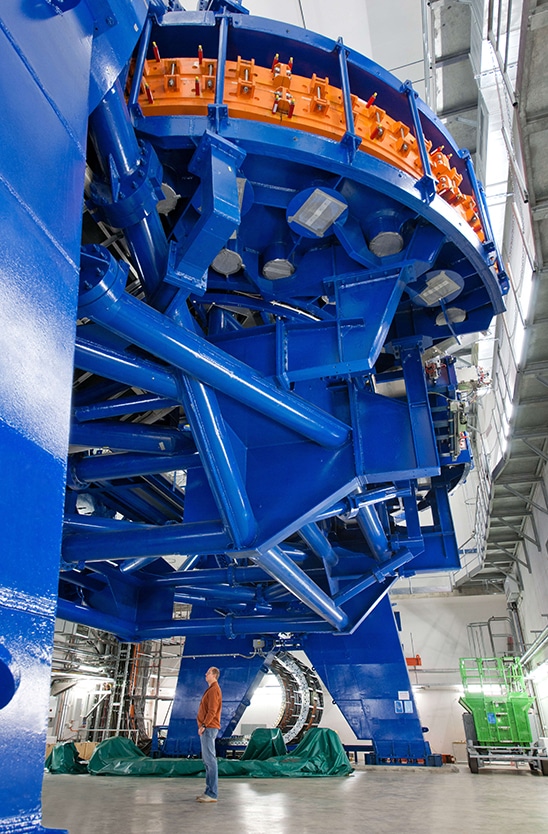
gantry end station – External View.Can you see the gentleman standing up?Here you can appreciate the real size of the device.(Courtesy of Heidelberg Ion Beam Therapy Center HIT )
All the elements are designed to operate in high vacuum conditions (<0.1 mTorr).The reason is very simple: like in a mass spectrometer high vacuum conditions are required to generate and transfer beams of ions.In simple terms: no vacuum, no protons, no beams.
The synchrotron is generally the part in the system where the lowest vacuum level is required.A good level of vacuum is fundamental to grant the correct proton source efficiency, a requirement normally fulfilled by providing either special ion pumps or in some cases special diffusion pumps.
The beamline is where the protons are focused and transported to the gantry room, using a combination ofion pumpsdistributed regularly along the line, typically fitted between the beam focusing and curving magnets.
High vacuum at work
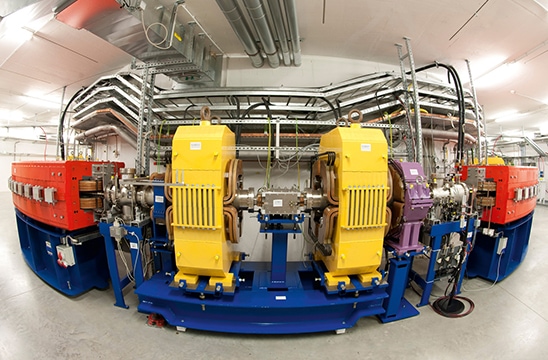
The synchrotron, the Proton Source.(Photo Courtesy of Heidelberg Ion Beam Therapy Center HIT )
From an applications standpoint, apart from the special vacuum conditions required by any device section, the pumps and relative power supplies need to operate in close proximity of huge Tesla-level magnetic fields and gigantic power generators.This is a critical part of the application and probably the most challenging requirement for ourion pump control units.Despite the electromagnetic interferences, there is a need to keep measuring nano currents, to constantly adjust the pumping speed and make sure the vacuum is maintained at the proper level.
High quality development standards and testing efforts are needed to obtain the certifications required to operate on medical equipment.
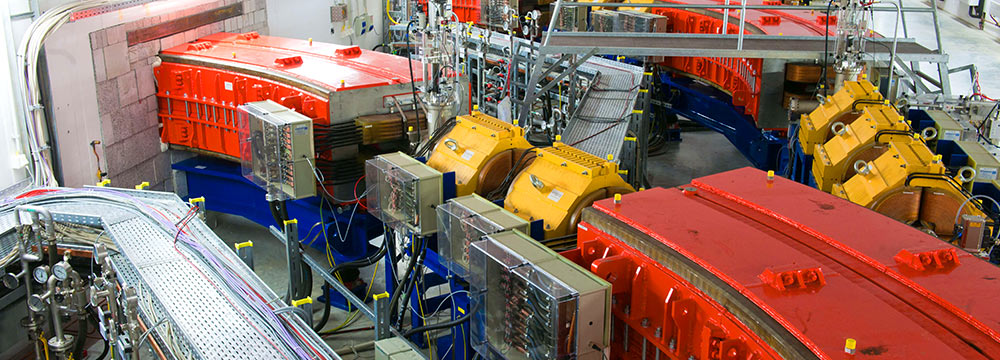
Proton beam lines: the main beam is split into three parallel lines to treat multiple patients at a time
(Courtesy of Heidelberg Ion Beam Therapy Center HIT )
必威体育登录手机The Agilent connection
必威体育登录手机Because Agilent has enjoyed a multi decade relationship with the European Organization for Nuclear Research (CERN) and other major physics research centers, the company is a privileged partner with all of the manufacturers of proton therapy systems.必威体育登录手机One way in which Agilent has contributed toward the evolving science of proton therapy is through the development of special vacuum solutions that can operate flawlessly in close proximity of those extremely powerful magnets and electric fields.Not an easy task considering the importance of the mission.
An example is shown in the following picture, where an operator is setting up a portion of the proton's beam line.Note the special large ion pump sitting just at his left.
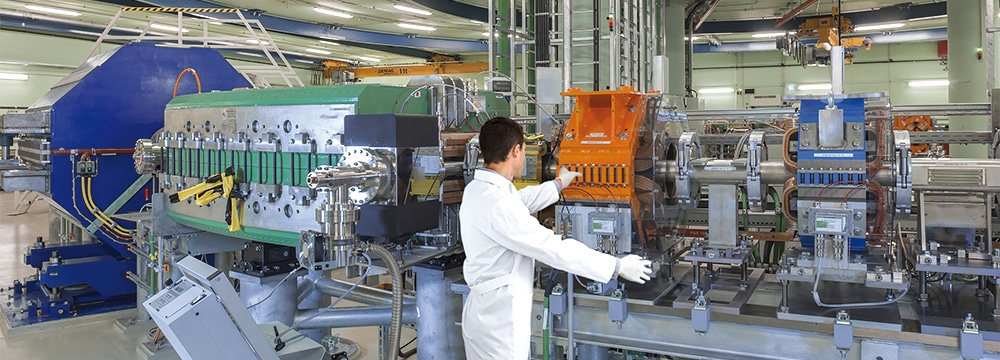
必威体育登录手机Proton beam line segment, showing an Agilent Ion Pump in close proximity to powerful beam focusing and curving magnets.(Courtesy of MedAustron)
必威体育登录手机Being challenged by customers dealing with extreme applications and solving technical problems that looked "impossible" at first glance have greatly contributed to what Agilent ion pumps are today.